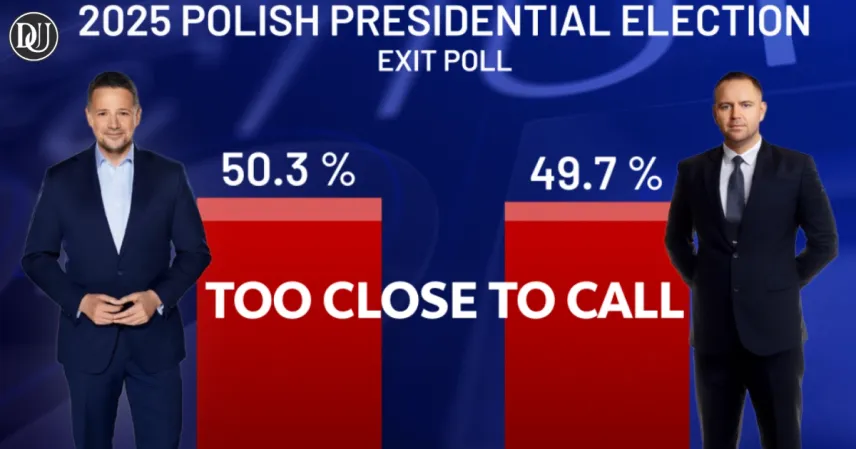In a closely contested race, conservative candidate Karol Nawrocki has emerged victorious in Poland's 2025 presidential election, securing 50.89% of the vote against liberal rival Rafał Trzaskowski's 49.11%. The election witnessed a record-high voter turnout of 71.7%, underscoring the nation's deep political divisions.
A Shift in Poland's Political Landscape
Nawrocki, a 42-year-old historian and former head of the Institute of National Remembrance, campaigned on a platform emphasizing traditional Polish values and skepticism towards the European Union. His victory signals a potential shift in Poland's domestic and foreign policies, particularly concerning EU relations and social reforms. This marks one of the most consequential results in recent poland election history.
Implications for Prime Minister Tusk's Government
While the Poland presidency is largely ceremonial, the role carries significant influence through veto power over legislation. Nawrocki's win could pose challenges for Prime Minister Donald Tusk's centrist government, especially in advancing reforms related to the judiciary, abortion rights, and LGBTQ+ issues. The ruling coalition currently lacks the parliamentary majority needed to override presidential vetoes, potentially leading to legislative gridlock.
Foreign Policy Outlook
Nawrocki's foreign policy stance includes opposition to the federalization of the EU and skepticism towards Ukraine's membership in NATO and the EU. He advocates for maintaining Polish sovereignty and has expressed a desire for reparations from Germany for World War II damages. His alignment with U.S. conservative figures, including former President Donald Trump, suggests a potential pivot in Poland's international alliances. This poland election outcome may shift the country's diplomatic direction in the coming years.
A Divided Electorate
The narrow margin of victory reflects a deeply polarized electorate. Trzaskowski, who campaigned on progressive reforms and closer ties with the EU, performed strongly in urban areas and among younger voters. However, Nawrocki's message resonated with rural populations and those favoring traditional values, highlighting the ongoing cultural and political divides within the country. The poland election turnout showed the nation’s commitment to democratic engagement despite ideological rifts.
Looking Ahead
As Poland navigates this new political chapter, the dynamics between President Nawrocki and Prime Minister Tusk's government will be pivotal. The outcome of the 2025 presidential race not only reshapes Poland's internal politics but also holds implications for its role within the broader European context. This poland election will likely be remembered as a turning point in the country's political evolution..










